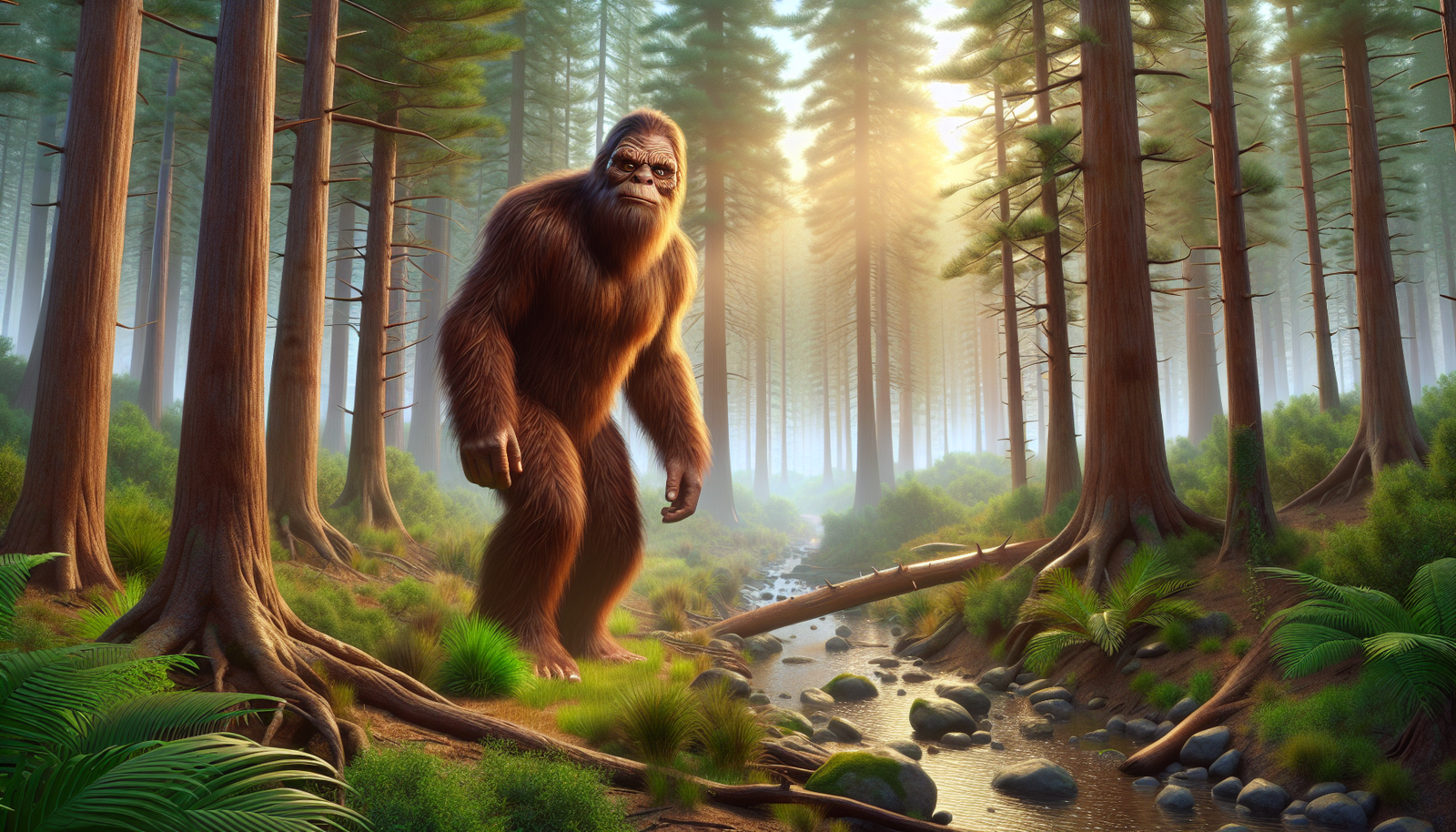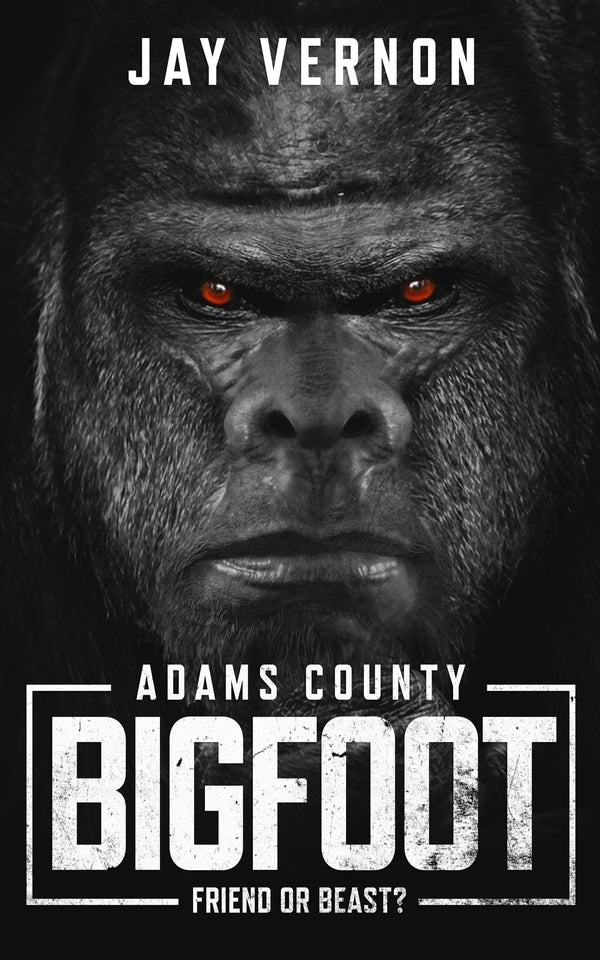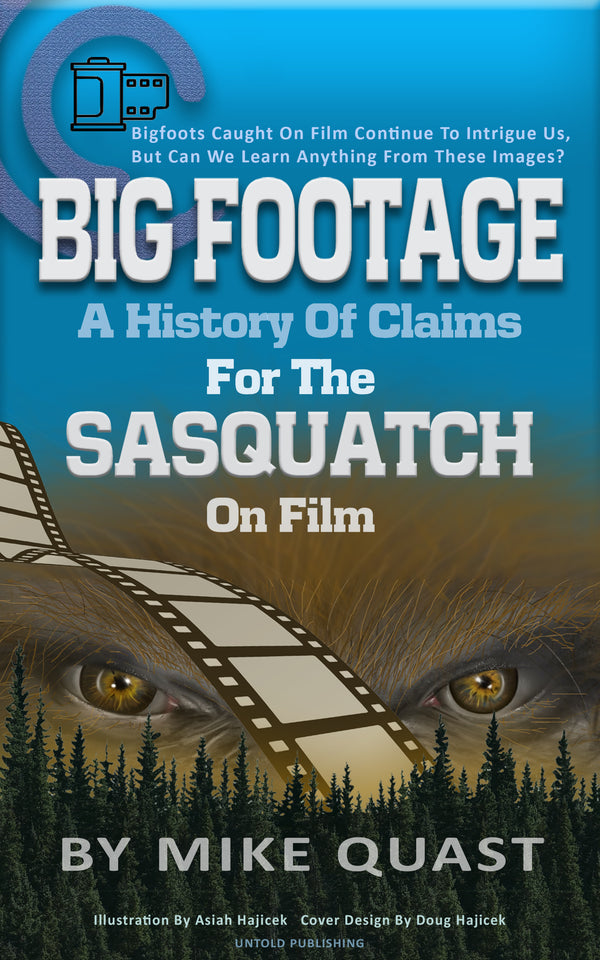Legends, Sightings, and Mysteries of Bigfoot in Oklahoma

By Wade Beaumont, Cryptozoologist
Howdy, folks! Wade Beaumont here, and let me tell you, there's something mighty special about Oklahoma when it comes to the enduring fascination with Bigfoot. This state's got a rich history of legends, sightings, and cultural significance that'll make your hair stand on end. As a Texan and a park ranger, I've always been drawn to the mysteries of the wild, and Oklahoma's Bigfoot lore is as captivating as they come.
Now, I've been tracking Sasquatch for years, using a combination of old-fashioned tracking skills and high-tech gear. But what really sets Oklahoma apart is the deep-rooted connection between Bigfoot and the land itself. From ancient Native American folklore to modern-day eyewitness accounts, the stories of this elusive creature are woven into the very fabric of the state's identity.
So, saddle up and join me on a journey through the dense forests, rugged mountains, and hidden corners of Oklahoma as we uncover the truth behind one of the most fascinating cryptids in American history. We'll explore the origins of the legends, examine the hotspots of activity, and delve into the scientific research that's shedding new light on this age-old mystery. By the time we're done, you'll see why Oklahoma is a true Bigfoot mecca and why the search for this legendary beast continues to captivate the hearts and minds of adventurers and believers alike.
The Origins of Bigfoot Legends in Oklahoma
To understand the Bigfoot phenomenon in Oklahoma, we've got to go back to the very beginning—to the stories and traditions of the Native American tribes who've called this land home for generations. The Choctaw and Cherokee peoples, in particular, have a rich oral history that includes tales of Bigfoot-like creatures roaming the wilderness.
The Choctaw legend of the "Hattak Lusa Chito" or "Big, Black Man" is especially intriguing. According to the story, this creature was brought to the area in the 1830s by a powerful witch who used it to terrorize and harass those who crossed him. For 30 years, the witch and his monstrous servant held the region in a grip of fear, until a brave family finally put an end to the witch's reign of terror. The creature, now free from its master's control, disappeared into the forests, where it's said to roam to this day.
The Cherokee people also have their own traditions of Bigfoot-like beings, passed down through generations of storytellers. These ancient tales speak of giant, hairy, man-like creatures that inhabit the remote corners of the land, living in harmony with nature and possessing a deep spiritual connection to the earth.
But it's not just the Native American legends that fuel the Bigfoot mystery in Oklahoma. The early settlers who arrived in the region in the 19th century brought their own encounters and sightings to the mix. In fact, the first documented account by a white settler dates back to 1849, when a hunter and trapper known as "One-Eyed Bascomb" reported seeing a "strange critter" in the swamps near the town of Eagle. This sighting, which predates the famous 1958 "Bigfoot" encounter in California, is just one of many that have been recorded throughout the late 1800s and early 1900s.
As more and more people began to settle in Oklahoma, the stories of Bigfoot sightings continued to grow. From farmers and ranchers to hunters and loggers, folks from all walks of life claimed to have seen the creature lurking in the shadows of the forest or leaving massive footprints in the mud. These early encounters laid the foundation for what would become a rich tapestry of Bigfoot lore in Oklahoma, a tradition that continues to thrive to this very day.
The Bigfoot Hotspot: Southeastern Oklahoma
Now, if you're looking for the heart of Bigfoot country in Oklahoma, you've got to head to the southeastern part of the state. This region, with its dense forests, rugged terrain, and abundant water sources, is like a paradise for our elusive friend. The Ouachita Mountains and the Ozark National Forest, in particular, have long been considered prime Bigfoot habitat, and it's here that we find the highest concentration of sightings and encounters.
What makes this area so special? Well, for starters, it's got all the right ingredients for a Sasquatch hideout. The thick, lush vegetation provides plenty of cover, while the winding rivers and creeks offer a constant supply of fresh water. The rugged, mountainous landscape is full of hidden valleys, caves, and crevices where a creature could easily remain unseen for years at a time.
But it's not just the natural features that make southeastern Oklahoma a Bigfoot hotspot. This region has a long history of sightings and encounters that have captured the imagination of researchers and enthusiasts alike. Take, for example, the case of Charles Benton, a local resident who claims to have had a terrifying run-in with the creature while turkey hunting in the early 2000s.
According to Benton, he was out in the woods near Hochatown when he heard a loud, grunting sound that seemed to shake the very earth beneath his feet. As he looked around, trying to locate the source of the noise, he spotted a massive, reddish-brown figure standing in a nearby creek. The creature, which Benton estimates was nearly 8 feet tall, turned and stared directly at him with its large, flat face. Benton, understandably shaken by the encounter, hightailed it out of there, leaving his hunting gear behind in his haste to escape.
Benton's story, which has been featured on national television shows like "Finding Bigfoot," is just one of many that have emerged from the Hochatown and Broken Bow areas in recent years. Locals and visitors alike have reported seeing large, hairy, bipedal creatures lurking in the woods, leaving behind massive footprints, and even interacting with humans on occasion.
These modern sightings, combined with the region's rich history of Bigfoot activity, have cemented southeastern Oklahoma's reputation as a true hotspot for Sasquatch enthusiasts. Researchers and investigators from around the world flock to this area, hoping to catch a glimpse of the legendary beast or uncover new evidence that might help solve the mystery once and for all.
The Honobia Bigfoot Festival: Celebrating Oklahoma's Cryptid Culture
Now, folks, if you really want to immerse yourself in Oklahoma's Bigfoot culture, there's no better place to do it than at the annual Honobia Bigfoot Festival. This event, which takes place every October in the small town of Honobia, has become a mecca for Sasquatch enthusiasts from all over the country.
The festival, which started as a small gathering of local believers, has grown into one of the largest Bigfoot-themed events in the United States. Thousands of people descend on Honobia each year, drawn by the promise of expert speakers, vendor booths, and the chance to swap stories and experiences with fellow enthusiasts.
One of the highlights of the festival is the daylong conference, which features presentations by some of the most renowned Bigfoot researchers and investigators in the field. These experts share their latest findings, discuss new theories and evidence, and offer insights into the ongoing search for the elusive creature. It's a rare opportunity to hear directly from the people who are on the front lines of Bigfoot research, and it's a must-attend event for anyone serious about the subject.
But the Honobia Bigfoot Festival isn't just about serious scientific inquiry. It's also a celebration of the creature's place in Oklahoma's cultural landscape. Vendor booths line the streets, selling everything from Bigfoot-themed t-shirts and hats to handcrafted wooden carvings and plaster casts of alleged footprints. There's even a Bigfoot 5K race, where participants can test their mettle against the legendary beast (or at least a costumed version of it).
As the sun sets on the festival grounds, the atmosphere takes on a more mystical tone. Attendees gather around campfires, sharing their own encounters and experiences with the creature. Some even venture out into the surrounding woods, armed with flashlights and cameras, hoping to catch a glimpse of Bigfoot in its natural habitat.
The economic and cultural impact of the Honobia Bigfoot Festival cannot be overstated. For one weekend each year, this tiny town becomes the center of the Bigfoot universe, drawing in visitors from across the country and beyond. Local businesses, from hotels and restaurants to gas stations and souvenir shops, see a significant boost in revenue, while the festival itself has become a source of pride and identity for the community.
But perhaps more importantly, the festival has helped to legitimize the search for Bigfoot in Oklahoma and beyond. By bringing together experts, enthusiasts, and curious onlookers in a spirit of shared passion and purpose, the event has helped to create a sense of community and camaraderie among those who believe in the creature's existence. It's a powerful reminder that, no matter how elusive or mysterious Bigfoot may be, the human fascination with the unknown is a force to be reckoned with.
The Controversial Bigfoot Bounty
Now, I've been around the Bigfoot block a few times, but even I was surprised when I heard about the bounty that was being offered for the capture of a live Sasquatch right here in Oklahoma. It all started back in 2021, when state representative Justin Humphrey introduced a bill that would have established an official Bigfoot hunting season in the state.
Humphrey's proposal was pretty straightforward: The Oklahoma Wildlife Conservation Commission would set aside specific dates each year when licensed hunters could go out and try to bag themselves a Bigfoot. The kicker? There was a $3 million bounty on the table for anyone who could bring in a live specimen.
As you might imagine, the idea of a state-sanctioned Bigfoot hunt didn't sit well with everyone. Believers and skeptics alike were quick to voice their opposition, arguing that the proposal was not only absurd but also potentially dangerous. Some worried that overzealous hunters might mistake a human for a Sasquatch, while others pointed out the ethical concerns of capturing and holding a sentient being against its will.
But Humphrey, to his credit, seemed to have thought this through. He made it clear that the intent was not to kill Bigfoot, but rather to capture it alive and unharmed. He even suggested that the bounty money could come from a combination of state tourism funds and private donations, including a pledge from an upcoming Bigfoot-themed movie.
Despite the controversy, Humphrey's proposal gained a fair bit of traction. It sparked a broader conversation about the role of cryptid hunting in modern society and the potential impact that such activities could have on fragile ecosystems. Some even argued that, by bringing attention to the Bigfoot phenomenon, the bounty could help to boost tourism and economic activity in the state.
In the end, Humphrey's bill failed to pass, but the idea of a Bigfoot bounty remains a topic of fascination and debate among enthusiasts and researchers alike. It's a powerful reminder of the deep-seated curiosity and passion that drives the search for this elusive creature, and of the lengths that some are willing to go to in order to prove its existence.
As for me, I'm not sure where I stand on the idea of a Bigfoot bounty. On the one hand, I can understand the desire to bring some concrete evidence to the table, to finally put the debate to rest once and for all. But on the other hand, I worry about the unintended consequences of treating a living being like a trophy to be hunted and captured.
What I do know is that the Bigfoot phenomenon in Oklahoma is about more than just a single bounty or hunting season. It's about a rich tapestry of legends, sightings, and cultural traditions that have shaped the state's identity for generations. It's about the thrill of the unknown, the allure of the mysterious, and the enduring power of the human imagination. And that, my friends, is something that no bounty can ever truly capture.
The Science and Research Behind Bigfoot in Oklahoma
Now, I know what some of you might be thinking: "Wade, this Bigfoot stuff is all well and good, but where's the hard evidence? Where's the science behind the legend?" Well, let me tell you, there are plenty of folks out there who are asking the same questions and working tirelessly to uncover the truth behind the Sasquatch mystery.
One of the most prominent organizations dedicated to Bigfoot research in Oklahoma is the Mid-America Bigfoot Research Center (MABRC). Founded by D.W. Lee, this group takes a methodical, science-driven approach to investigating Bigfoot sightings and encounters across the state.
The MABRC team is made up of experienced researchers, investigators, and analysts who bring a wide range of skills and expertise to the table. They collect and analyze eyewitness accounts, physical evidence, and other data related to Bigfoot activity, using cutting-edge technology and rigorous scientific methods to separate fact from fiction.
One of the things that sets the MABRC apart is its commitment to on-the-ground investigation. The group conducts regular field expeditions to known Bigfoot hotspots, using advanced tools like thermal imaging cameras, night vision goggles, and audio recording equipment to gather evidence and observe the creature in its natural habitat.
Through their work, the MABRC has helped to identify some key patterns and characteristics of Bigfoot sightings in Oklahoma. For example, they've noted that the majority of reported encounters occur in the southeastern region of the state, particularly in the dense forests and rugged terrain of the Ouachita Mountains and Ozark National Forest.
They've also compiled detailed descriptions of the creature's physical appearance, behavior, and vocalizations based on eyewitness accounts. These reports often describe Bigfoot as a massive, bipedal, ape-like creature standing between 6 and 9 feet tall, with a stocky, muscular build, long arms, and a distinctive, unpleasant odor.
But the MABRC isn't just interested in collecting data and analyzing evidence. They're also committed to educating the public and dispelling some of the more sensational or fantastical claims about Bigfoot. As D.W. Lee himself has noted, "We like to try to educate the public about the true information that's out there. You have so many TV shows that are putting garbage out there and nobody knows for sure what is real and what's not real."
This emphasis on scientific rigor and evidence-based research is crucial to the ongoing search for Bigfoot in Oklahoma and beyond. By approaching the subject with a critical eye and a commitment to the facts, groups like the MABRC are helping to legitimize the field of cryptozoology and bring a new level of credibility to the study of unknown creatures.
Of course, the science behind Bigfoot is still very much a work in progress. Despite decades of research and investigation, we still don't have a definitive answer to the question of whether or not the creature exists. But what we do have is a growing body of evidence, a dedicated community of researchers and enthusiasts, and a deep fascination with the mysteries of the natural world.
From Bigfoot to UFOs: Hangar 1 Publishing Has You Covered!
Explore Untold Stories: Venture into the world of UFOs, cryptids, Bigfoot, and beyond. Every story is a journey into the extraordinary.
Immersive Book Technology: Experience real videos, sights, and sounds within our books. Its not just reading; its an adventure.



























